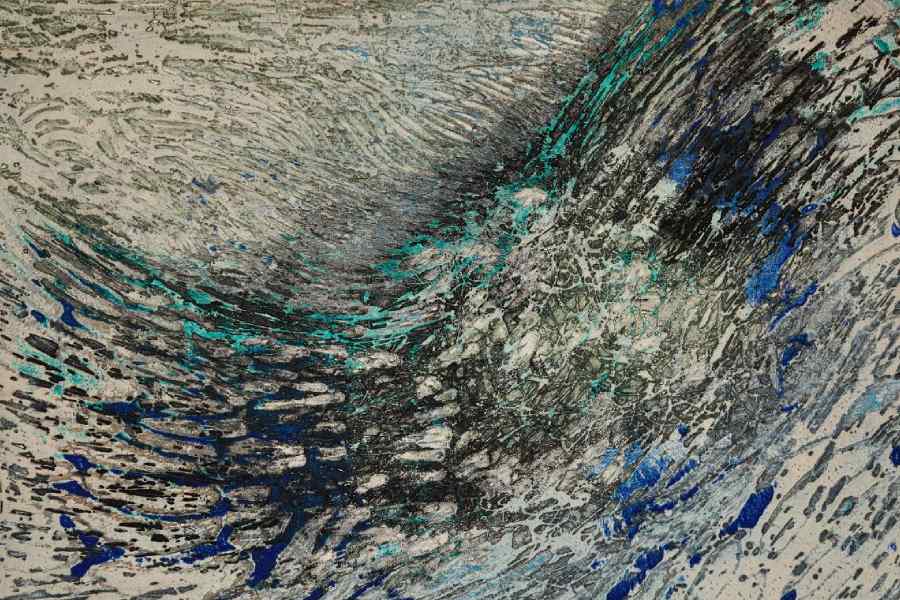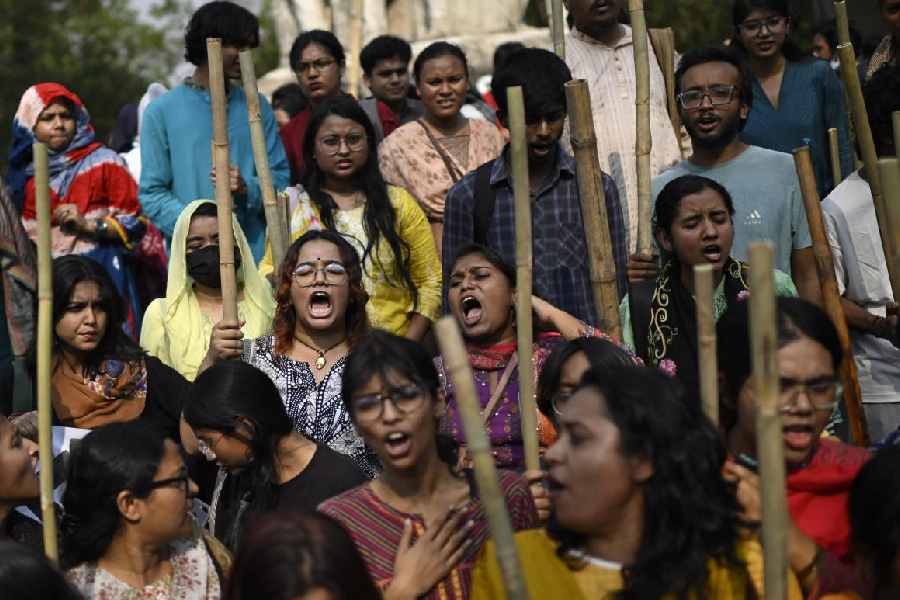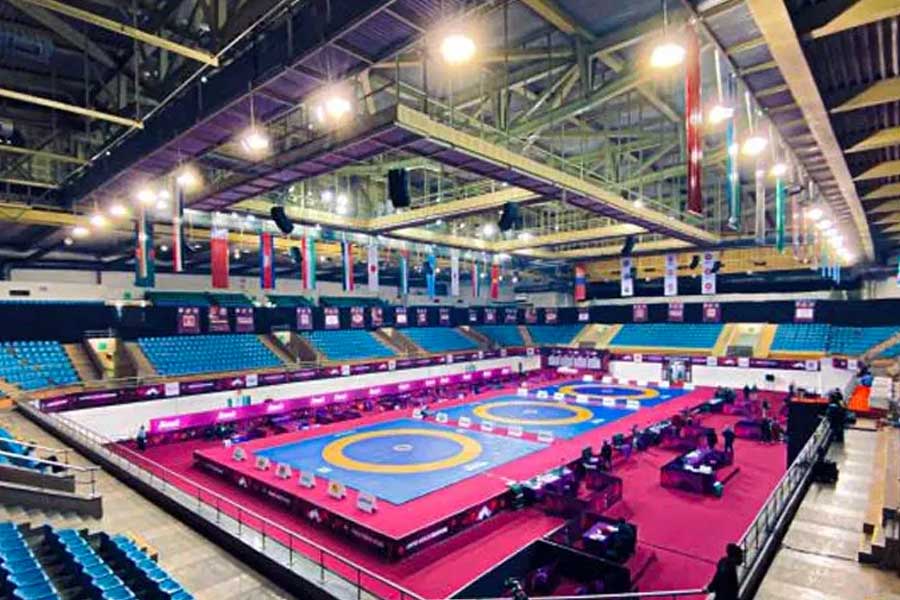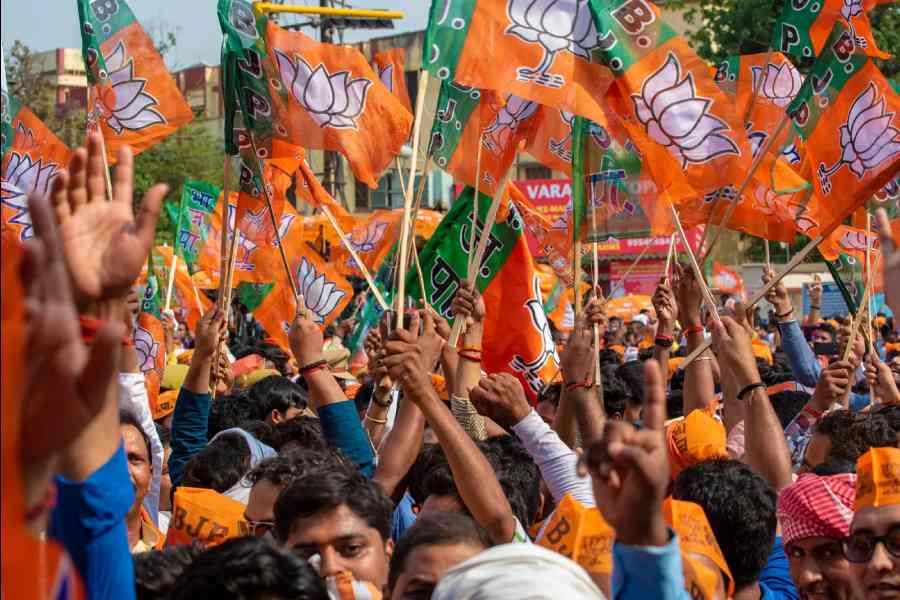Individuality in art does not necessarily co-exist with isolationism. An artwork that is singular in its style, thought and skill can not only be inspired by other artists but also, in turn, stimulate more artistic minds. While much is written about such influences and confluences, witnessing the links first-hand is a rare treat. Of Friendships: Krishna Reddy and His World (on view at Experimenter, Ballygunge Place till today) is one such show that explores the visual idioms of various artists who inspired or drew inspiration from one another. The linchpin of the show is the printmaker extraordinaire, Krishna Reddy, whose artistic vision bloomed under the tutelage of Nandalal Bose and Ramkinkar Baij in the naturally rich environs of Santiniketan and then blossomed in the company of creators like Stanley William Hayter and Zarina at Paris’s famous Atelier 17, an experimental print workshop.
Together with Hayter and Zarina, Reddy pioneered and perfected the technique of multicolour viscosity printing, which involved applying multiple colours to the same etched and carved metal plate (unlike traditional printing where each colour has a separate plate). The success of this technique depends on the artist’s skill at blending the inks with oil to create varied levels of viscosity so that the colours would mix and repel in unique ways as well as be absorbed at different depths on the incised plate. This juxtaposition and layering of pigments are facilitated by rollers of variable softness, ensuring that the colours maintain their autonomy yet possess an organic relationship with one another, a characteristic that is often lacking in conventional colour printing. This technique virtually eliminated repetition from the process of printmaking, a trait which has led to its belittling in the art world forages, for even the exact same plate would never yield the same result twice. The results are images of extraordinary chromatic and textural complexity that defy definition like Rorschach’s ink blots.
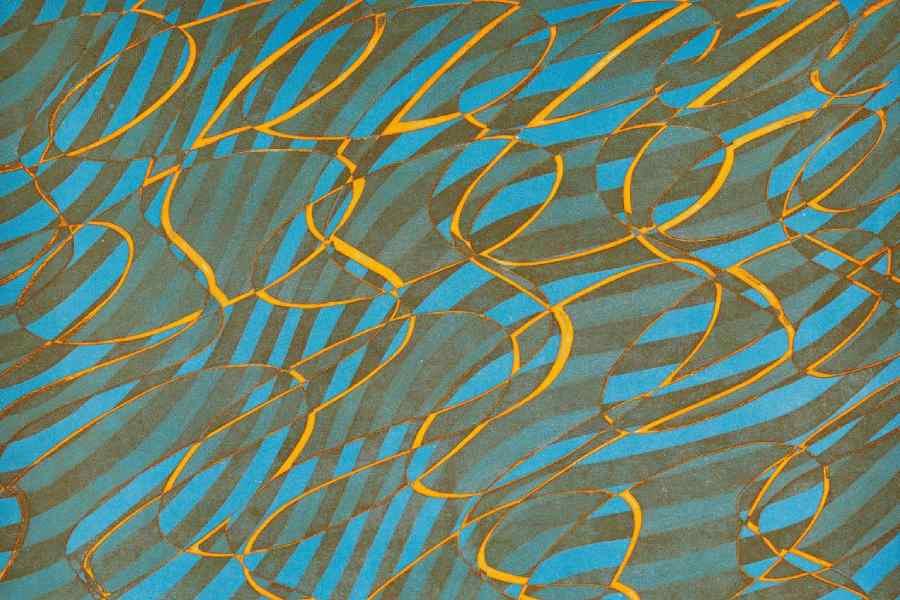
Ripple (1970) a multicolour viscosity print on paper by Stanley William Hayter [Experimenter]
Both geometric and chaotic, artworks like Flight, Water Form, Whirlpool and Wave (picture, left) mimic the capricious energy of water — be it in the varied reflections that dance off its surface, its changing flow, or its malleable form. The etching plate of Wave is on display next to the piece and comparing print and plate will show just how big a role the viscosity of inks mixed by the artist played in creating the final product, at times evoking texture where there was none on the plate. While the complementary Ripples (picture, right) and Voiles by Hayter, displayed alongside, pick up on the same theme and use the same technique, one can see the difference between the two artists. Where Hayter believed that the artist’s unconscious mind could guide his or her hand across the metal plate to reveal an image developed without conscious thought, Reddy’s work stems from meticulous planning and control over his medium.
Similar convergences and divergences with the likes of Zarina, Nalini Malani, Gabor Peterdi, Shirley Witebsky and, of course, Ramkinkar Baij and Benode Behari Mukherjee are evident across the show. Pages from Reddy’s sketchbook reveal his affiliation with the artistic vision of his teacher, Nandalal Bose. Also visible to the discerning eye would be links that are not explicitly made — inspiration from Picasso (a regular visitor to Atelier 17, which Reddy ran along with Hayter) in his study of the human figure, an affinity towards Chittaprosad in his stark depictions of the Bengal famine. There are other artistic parallels that can be drawn even if the influence may not have been a direct one — Reddy’s preoccupation with the clown, for instance, is reminiscent of Ganesh Pyne’s Clown series. Like Pyne, Reddy was struck by the tragic potential in the face of the joker, who is shattered by shards of colour in his prints. Ferociously drawn lines linking spherical balls of energy turn the clown into a symbol of unconventional and singular artistic temperament.
Nature is another expression of singularity in Reddy’s works — no two leaves, flowers or barks are alike. There is a constant return to nature in his pieces, not least because Reddy had a profound rapport with the natural world, having studied botany and biology at Visva-Bharati. This is perhaps why the prints often seem like live cross-sections of cellular structures being studied under the microscope of the artist.

